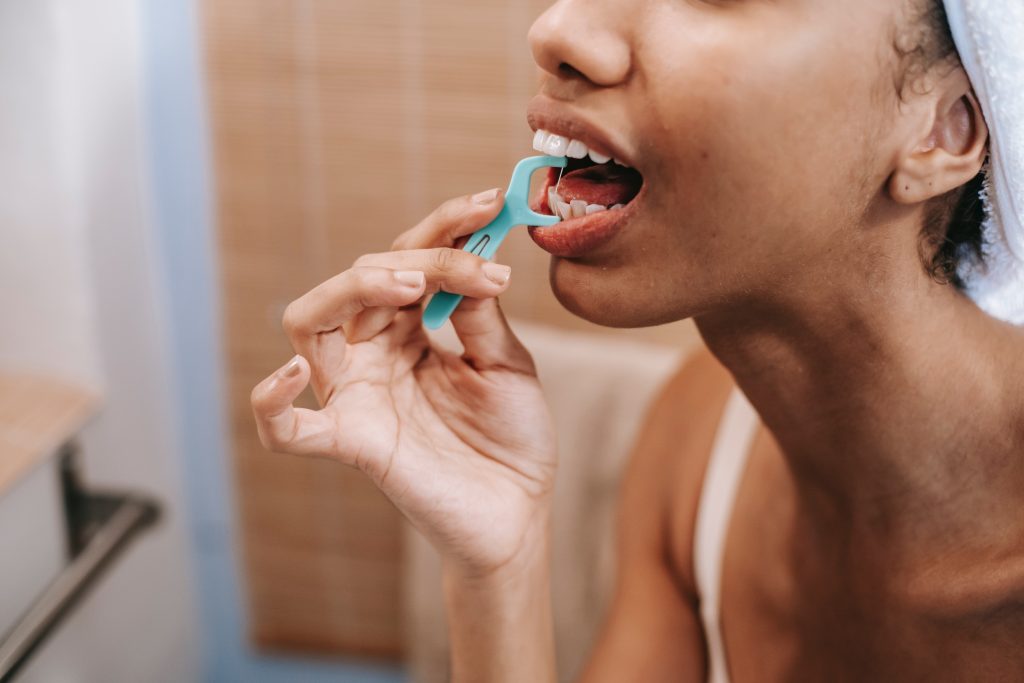
You will agree with the fact that annual physical body checkups are essential for your overall well-being; a routine checkup from a dentist is one of them. To reduce the chances of a cavity or gum disease, plaque removal and tartar buildup removal are necessary.
According to the American Dental Association, interdental cleaning is an essential component of oral hygiene and important for maintaining healthy teeth and gums. A survey shows that only 30% of Americans floss daily, while 37% say they never floss. This lack of interdental cleaning is concerning because it can lead to many dental problems, including tooth decay, gum disease, and bad breath.
Let us learn more about interdental cleaning and how this simple step improves your oral care routine.
Interdental cleaning removes food particles and plaque from the spaces between your teeth. These spaces, known as interdental spaces, are vulnerable to bacteria and food debris buildup, which can develop into tooth decay and gum disease. Interdental cleaning can be achieved through various methods, including flossing, interdental brushing, water flossing, and wooden or plastic picking.
Brushing your teeth alone cannot effectively clean the tight spaces between your teeth that interdental cleaning can. If left unchecked, plaque buildup can cause tooth decay and gum disease, leading to tooth loss and other health problems. In addition to these serious health concerns, poor oral hygiene can cause bad breath, which can be embarrassing and affect your self-esteem.
Just like tooth brushing, it is recommended to clean interdental spaces daily to keep your mouth fresh and healthy.

Dental floss, interdental brushes, water flossers, and wooden or plastic picks help clean food debris and interproximal dental plaque present in the hard-to-reach areas of the teeth. Each product has advantages and disadvantages, and the best choice depends on personal preference and oral health needs.
Dental floss is the most common interdental cleaning tool available in waxed or unwaxed, flavored or unflavored, and wide or narrow varieties. Flossing is a time-tested method for removing plaque and food particles between your teeth and can be done once or twice a day. However, as mentioned earlier, not enough people floss daily or never floss at all.
If you have braces or other dental appliances in your mouth that make flossing difficult, interdental brushes are made available for you. These small, conical brushes can be used to clean the spaces between your teeth and are available in various sizes and shapes. Using an interdental brush once a day is enough, preferably before bedtime. However, it would help if you replaced it every two to four weeks.
Water flossers are especially useful for people with sensitive gums or those who find traditional flossing uncomfortable. They use a stream of water to remove plaque and food particles from between your teeth. Meanwhile, wooden or plastic picks can also be used to remove food debris and plaque from between your teeth. They're not as effective as the other interdental cleaners and should be used in conjunction with these methods.
1. Choose the right interdental cleaning tool.
There are many options mentioned above to use as an interdental cleaner. The best choice is the one that works for you and how comfortably you use it.
2. Use the correct technique.
For instance, when using dental floss, wrap it around your index fingers and gently slide it between your teeth. Curve the floss into a "C" shape around the base of each tooth and move the floss up and down to remove plaque and food particles. Look in the mirror and insert the brush between your teeth for interdental brushes. Choosing the size that fits snugly between your teeth is important. Use a back-and-forth motion to clean each space. Depending on the spaces between your teeth, you will likely need various brush sizes.
Water flosses don't require much effort as you only use a water stream to remove debris between your teeth. You can also look in the mirror to make things simpler.
3. Be gentle
When cleaning between your teeth, be gentle to avoid damaging your gums. Use a light touch and avoid snapping the floss or brush into place.
Undoubtedly, interdental cleaning should be a part of your oral care routine to help prevent tooth decay, gum disease, and bad breath. Using the right interdental cleaners and techniques can significantly affect your oral health. By making interdental cleaning a part of your daily routine, you can ensure that your teeth and gums stay healthy and strong for years.
At Arvada Dental Excellence, we are dedicated to helping you begin your journey toward optimal dental wellness. We provide exceptional customer service, ensuring our patients feel at ease and utilizing the latest dental technology.
Are you ready to begin your journey toward a healthier smile? If so, start investing in your oral health hygiene right away! Contact us or book an appointment with us, as we look forward to hearing from you.